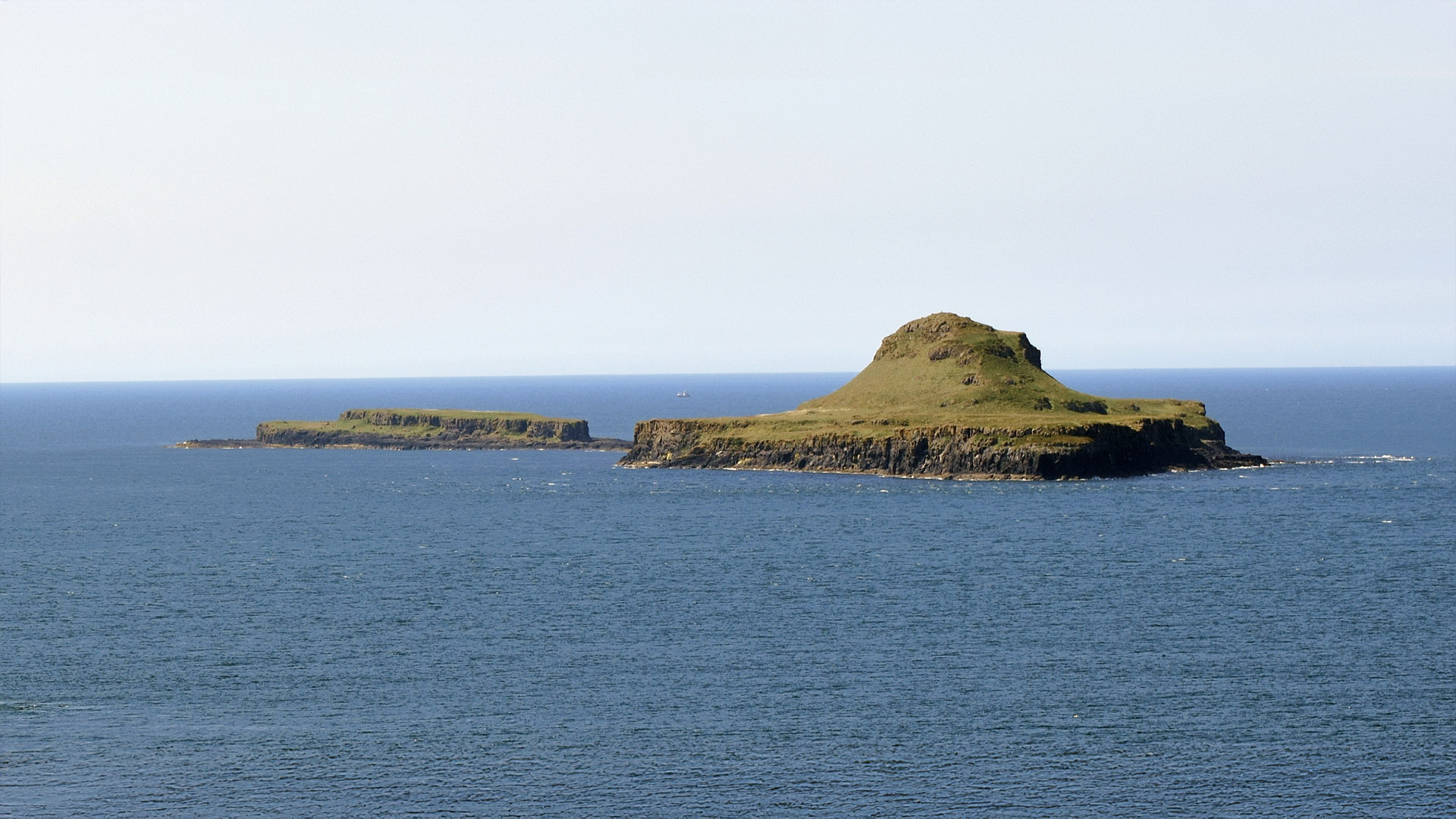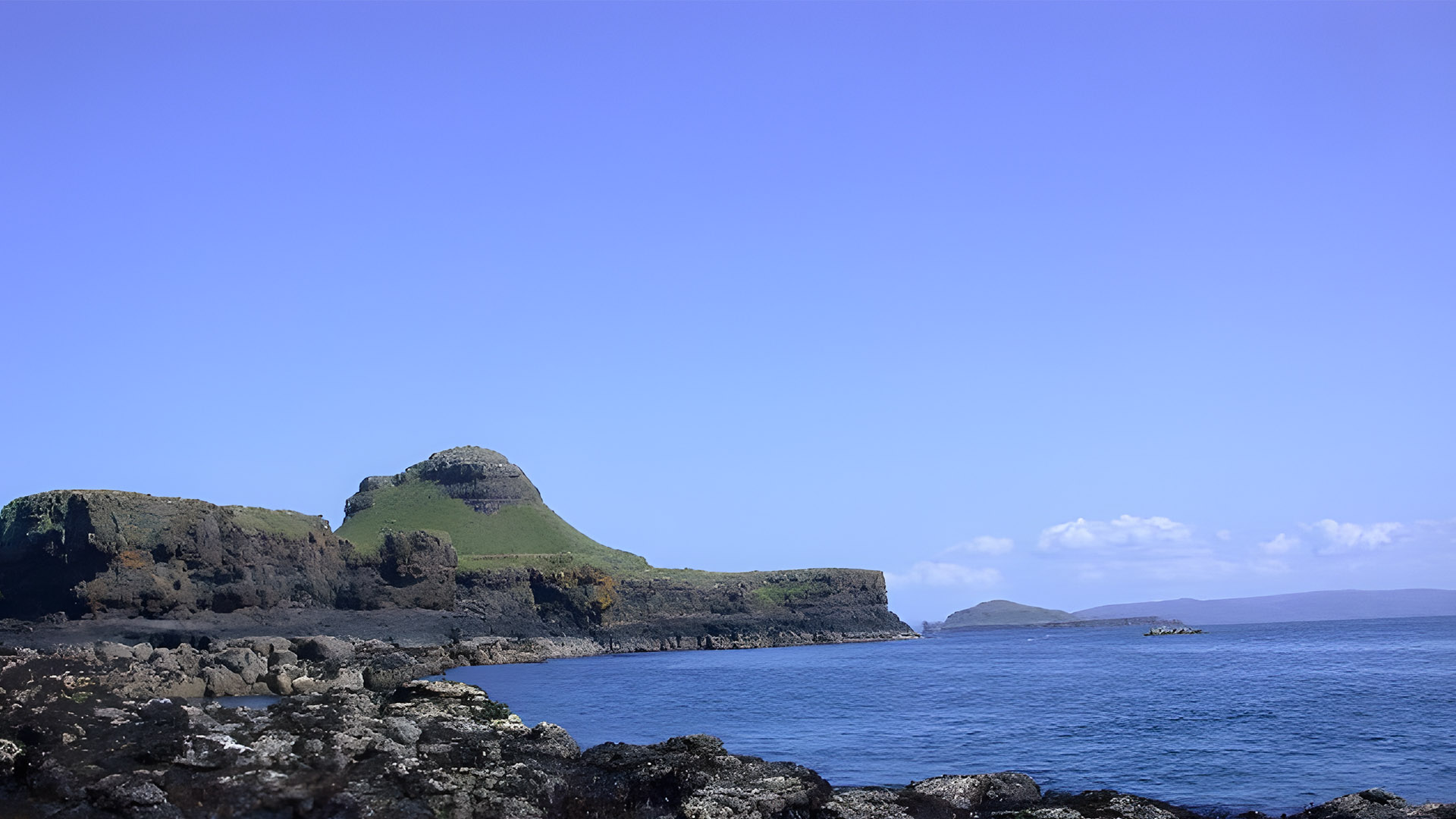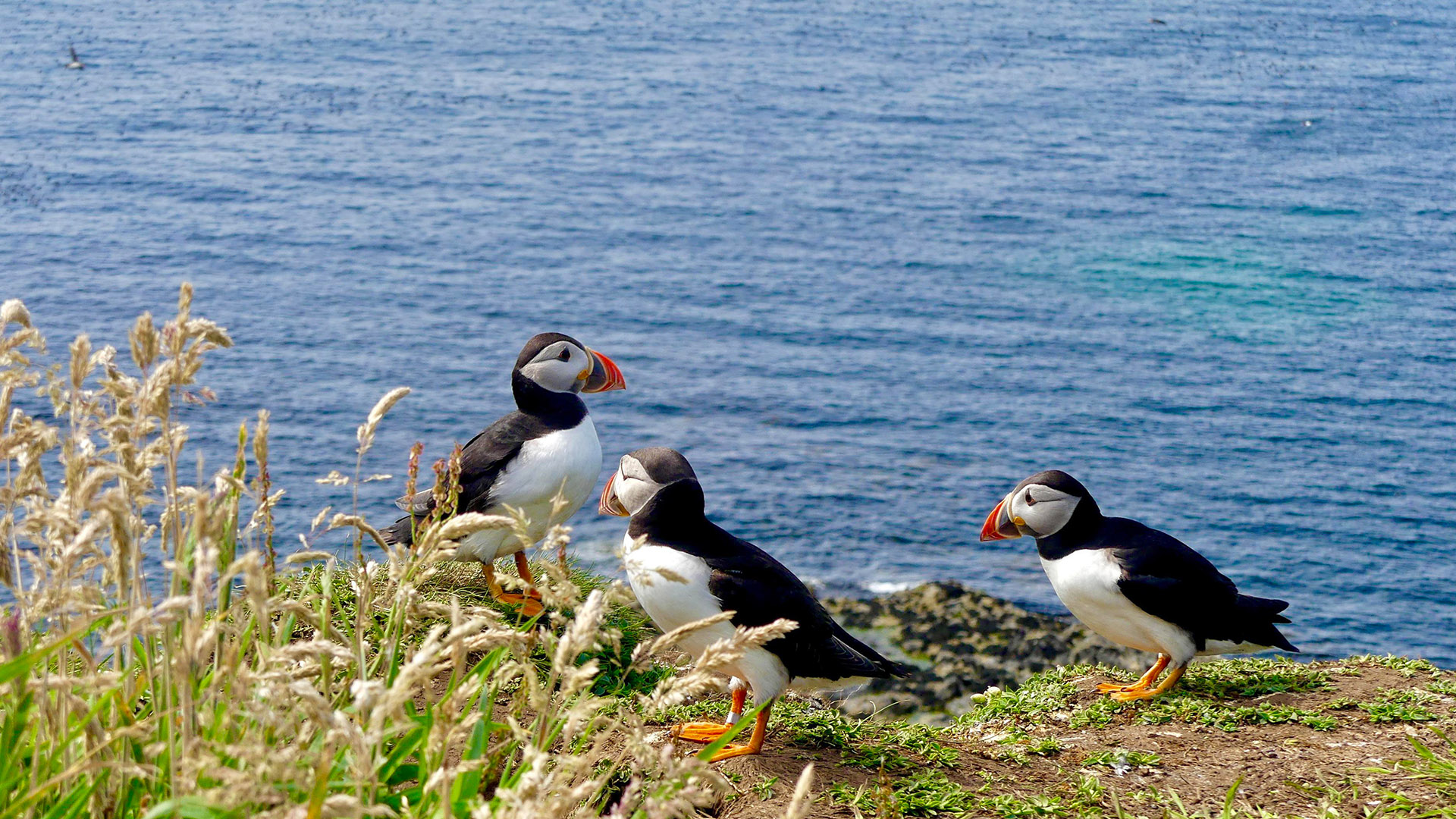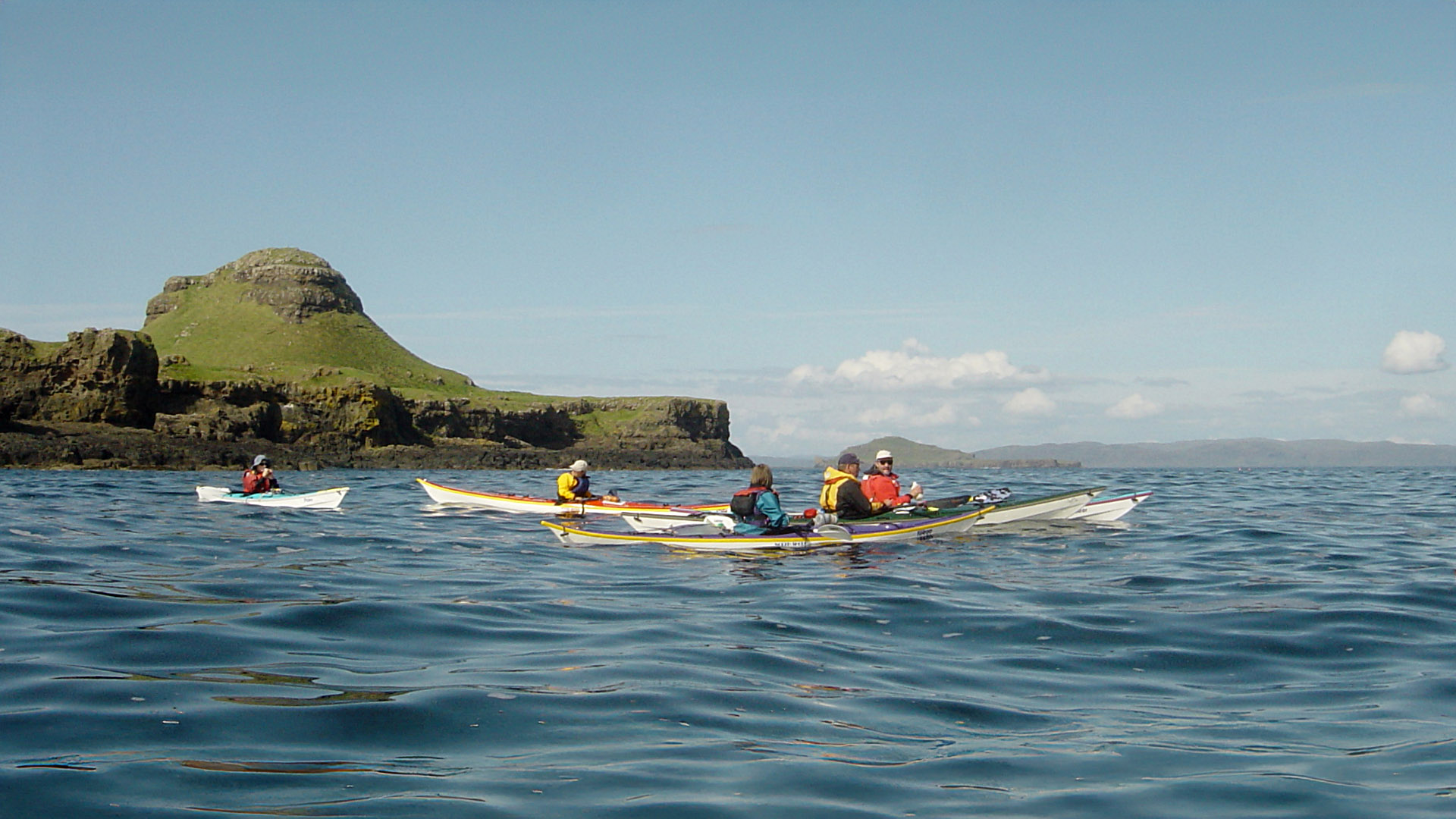Rising majestically from the Atlantic, west of the Isle of Mull, lies a truly unique landmark within the Treshnish Isles archipelago: Bac Mòr, famously known as “Dutchman’s Cap.” Its distinctive profile, resembling an old-fashioned hat, makes it one of Scotland’s most recognizable and intriguing islands. More than just a striking silhouette, this uninhabited isle is a geological marvel and a vital haven for West Coast wildlife.

Bac Mòr (Dutchman’s Cap) & Bac Beag by Rob Farrow, CC BY-SA 2.0, via Wikimedia Commons
The Distinctive Shape: Why ‘Dutchman’s Cap’?
The island’s popular nickname, ‘Dutchman’s Cap,’ comes from its unmistakable shape: a flat-topped, basaltic column-fringed base topped by a cone-shaped peak. This peculiar formation is a result of the same ancient volcanic activity that shaped much of the Inner Hebrides, including the famous Staffa. Over millions of years, cooling lava flows fractured into hexagonal columns, which were then sculpted by relentless erosion from wind and waves, giving Bac Mòr its iconic appearance.

Tony Page / Bac Mor, the Dutchman’s cap, on the Treshnish Isles
A Glimpse into its Past: History and Heritage
Unlike some of its larger neighbours, Bac Mòr has largely remained untouched by human habitation for centuries. The Treshnish Isles themselves have a sparse history of human settlement, primarily used for grazing livestock by crofters from Mull and Iona. Bac Mòr’s rugged terrain and exposed nature made it unsuitable for permanent dwelling, preserving its wild character.
Today, Dutchman’s Cap, along with the other Treshnish Isles, is a designated Site of Special Scientific Interest (SSSI), a Special Protection Area (SPA), and part of a National Nature Reserve. The islands are owned and managed by The Hebridean Trust, a conservation charity dedicated to protecting their unique natural and historical heritage. This protected status means that human intervention is minimal, allowing its natural ecosystems to thrive.
A Vibrant Haven for Wildlife
Dutchman’s Cap is a vital breeding ground for an astonishing array of seabirds, making it a spectacular destination for wildlife enthusiasts. During the spring and summer months (typically April to July), its cliffs and grassy slopes become bustling nurseries for thousands of birds.
It is particularly renowned for its large colony of Atlantic puffins, which are often seen waddling ashore or diving for fish around the island. Beyond puffins, you can expect to spot numerous other species, including guillemots, razorbills, kittiwakes, shags, and various gulls. The waters surrounding the Treshnish Isles are also home to a healthy population of common and grey seals, and it’s not uncommon to see dolphins, porpoises, or even minke whales on boat trips in the area.

Three puffins, showcasing the vibrant seabird life found amongst Scotland’s western Isles.
Experiencing Dutchman’s Cap: Boat Tours from Mull
Due to its protected status and fragile ecosystem, landing on Dutchman’s Cap (Bac Mòr) itself is generally not permitted. However, experiencing this magnificent island is still a highlight for many visitors to the Isle of Mull, as numerous boat tours offer incredible opportunities to cruise around it, providing fantastic views and wildlife spotting opportunities.
These tours often combine a circumnavigation of Dutchman’s Cap with landings on other nearby Treshnish Isles, most commonly Lunga (renowned for its very accessible puffin colony) and Staffa (home to Fingal’s Cave). This allows you to experience multiple iconic islands in one unforgettable trip.
On Mull, the primary operators offering trips that include views of Dutchman’s Cap are Turus Mara and Staffa Tours, providing convenient departure points from various locations across the island.
Common departure points for these tours directly from Mull include: Fionnphort, Ulva Ferry, and Tobermory.
The travel time to the Treshnish Isles (including Dutchman’s Cap) varies depending on your departure point. Here are some estimated direct boat journey times to the Treshnish Isles area, though note that total tour durations can be much longer due to combined itineraries and time ashore on other islands:
- Fionnphort: Approximately 45 minutes to 1 hour (direct sailing to nearby Treshnish Isles/Staffa area). Many tours from Fionnphort combine visits to Staffa and/or Iona, extending the total trip duration to several hours.
- Ulva Ferry: Approximately 1 hour to 1 hour 30 minutes (direct sailing to the Treshnish Isles area). Total tour durations often extend to several hours (e.g., 6 hours) when combined with landings on islands like Lunga.
- Tobermory: Approximately 1 hour (direct sailing to the Treshnish Isles area). However, many tours from Tobermory combine Staffa with other destinations like the Treshnish Isles, making the total trip duration typically 4-6 hours or more.

Dutchman’s Cap – deciding to leave by Andy Waddington, CC BY-SA 2.0, via Wikimedia Commons
Conservation and Respecting Nature
When visiting the Treshnish Isles, it’s essential to remember their protected status. Boat operators adhere to strict codes of conduct to minimize disturbance to wildlife, especially during nesting seasons. By choosing a reputable tour and following their guidelines, you contribute to the continued preservation of this incredible natural heritage for future generations.
Whether you dream of seeing puffins, marveling at unique geology, or simply experiencing the wild beauty of the Inner Hebrides, a trip to see the iconic Dutchman’s Cap is an unforgettable part of any Isle of Mull adventure. Start planning your journey by exploring the boat tour options available in our directory today!

